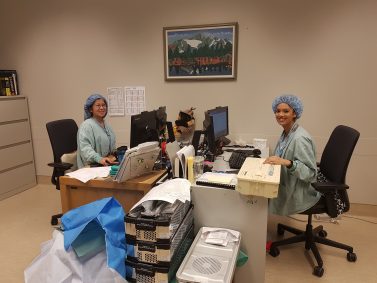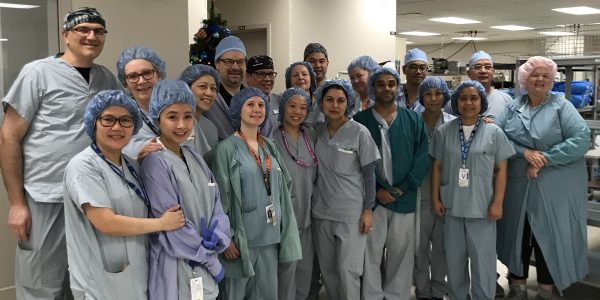Life underground: VGH tunnel and Medical Device Reprocessing Department
The basement corridors stretching from the Diamond Health Care Centre to the BC Cancer Agency, and connecting all VGH campus buildings in-between, are more than a way to get from one place to the next. They’re also home to several departments.
In the first of our series of profiles on the people and unsung heroes working in the VGH campus tunnel, we meet the Medical Device Reprocessing Department and learn how this team contributes to exceptional quality patient care.
Medical Device Reprocessing Department (MDRD)
Location: Basement – Jim Pattison Pavilion North (opposite the morgue)
Staff: 140
Hours of operation: 24/7
Size: 18,000 sq. feet– which is slightly larger than an NHL-sized ice rink.
Fun fact: The MDRD sterilizes more than 8 million pieces of equipment each year
“MDRD is the heart of the hospital. They touch almost every patient in the hospital, and by doing so the team supports the delivery of high-quality patient care. We’re very proud of it.”
Albert Csapo, utilization director, surgical services
What is the MDRD and what does it do?
The MDRD is a busy and bustling place. The team reprocesses contaminated instruments and equipment, ranging from a simple pair of scissors to complex flexible endoscopes. Items are cleaned, assembled, sterilized and placed in sterile storage. The team is also responsible for inspecting instruments and ensuring that they are repaired as needed.
Most sterilized instruments are destined for VGH operating rooms (ORs), which supply the team a ‘recipe’ of items required for different procedures. MDRD technicians gather instrument sets and individual items and place them on the surgical case carts. The team then oversees timely distribution. Other VGH departments send requisitions for instrumentation. These items are prepared are delivered to the requesting unit with the help of Patient Transport.
How does the MDRD support the delivery of quality patient care?
The team’s key role is to prevent infections caused by contaminated instruments. The majority — 65 per cent — of instruments come directly from the ORs. The rest come from the Emergency Department, Cath Lab and other areas within VGH.
The 24/7 operation also supports UBC Hospital, GF Strong and 12 Vancouver community sites. And, because VGH is home to the only Ethylene Oxide sterilization in the Lower Mainland, this talented team of 140 sterilizes select instruments for St. Paul’s Hospital, BC Cancer Agency, BC Children’s and Fraser Health.
How does the MDRD support innovation in health care?
In 2013, the MDRD went digital. The department changed its documentation of over 4,500 instrument sets, including instrument set lists; wrapping instructions, etc. The new Total Documentation (TDOC) system allows technicians to locate necessary instruments, scan and create the package for upcoming cases. This system has increased efficiency in the MDRD, which has directly benefitted patients, as departments around the hospital now get the instrument sets they need faster than before.
The department has also been championing new ways to reduce their environmental footprint.

Marieta Cheverton and Davina Dean (l to r) update instrument sets in TDOC.
What else happens in the MDRD?
In the 1990s, “The X-Files” used various locations in the VGH tunnel to film; including an area near the MDRD. “When I worked in the MDRD,” says Albert, “I used to walk by the crews on my breaks and see them filming. It was really neat.”


Janet Bristeir
Good overview of this very important department.